-

Kostas Murkudis
-Putting Kostas Murkudis, with his East German utilitarian approach, at the helm of Closed jeans, a brand defined by the relationship between function and form, is a match in heaven, in a time where the initial idea of fashion is caught between mass production and the arbitrary grip of luxury-obsessed conglomerates.
They each bring their own interesting history and their associations to big names to a collaboration very much anchored in the “now” – on one side, Marithé and François Girbaud, who founded Closed in the 70’s, and on the other, Helmut Lang, with whom Murkudis worked during the label’s early and formative years, though both brand and designer exist in their own right.
For women’s fashion week in September, Closed will open its first flagship store in Paris.
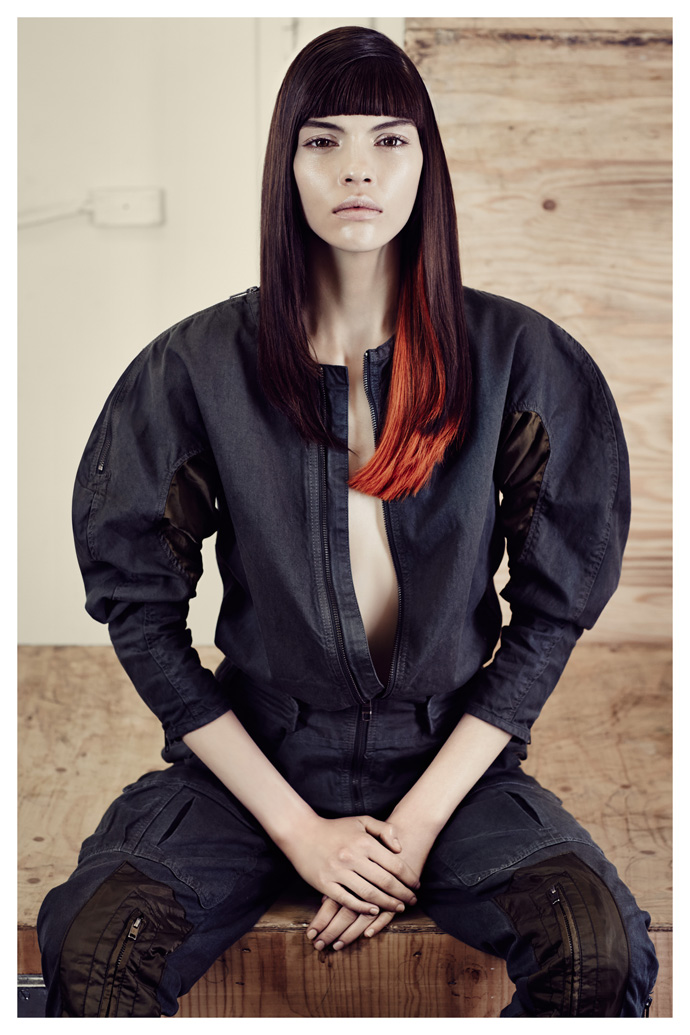
Overall "Illusion" from the FW 13/14 collection by Kostas Murkudis for Closed Jeans. Photography by René Habermacher
René Habermacher: When I heard you’d be working for Closed jeans, I thought it made great sense with your approach – sustainability, resistance, utilitarianism and uniformity are expressions that come to mind when thinking of your work, and all of these seem to be relevant in the context of jeanswear.
KM: I grew up in the DDR (German Democratic Republic), in East Germany, so these are surely aspects of my work that I value and are part of my professional ethos that I will follow up into the future. It’s my contribution, to make it accessible to more people than for example with my own brand.
I always had “two hearts beating in my chest”: one more poetic, free of necessities, and the other that is more about durability and functionality everyday. I always loved the approach of the Bauhaus, it is very important to me. But I really do love both aspects. Now with my new mission at Closed, I can really apply everything you described, I have all tools and a fantastic team I love working with.
For me this is the perfect balance between the two brands.Whereas with my own brand, my mini-label that I call my laboratory, I don’t have to think about whether the piece is really durable, has the right pocket or whatever. I just can do projects important to me, which do not necessarily have anything to do with fashion. For example recently I have worked with a royal glass manufactory in Munich, Lobmeyr, that usually do stuff like church windows etc. I think there are so many possibilities and I am very curious for new challenges.
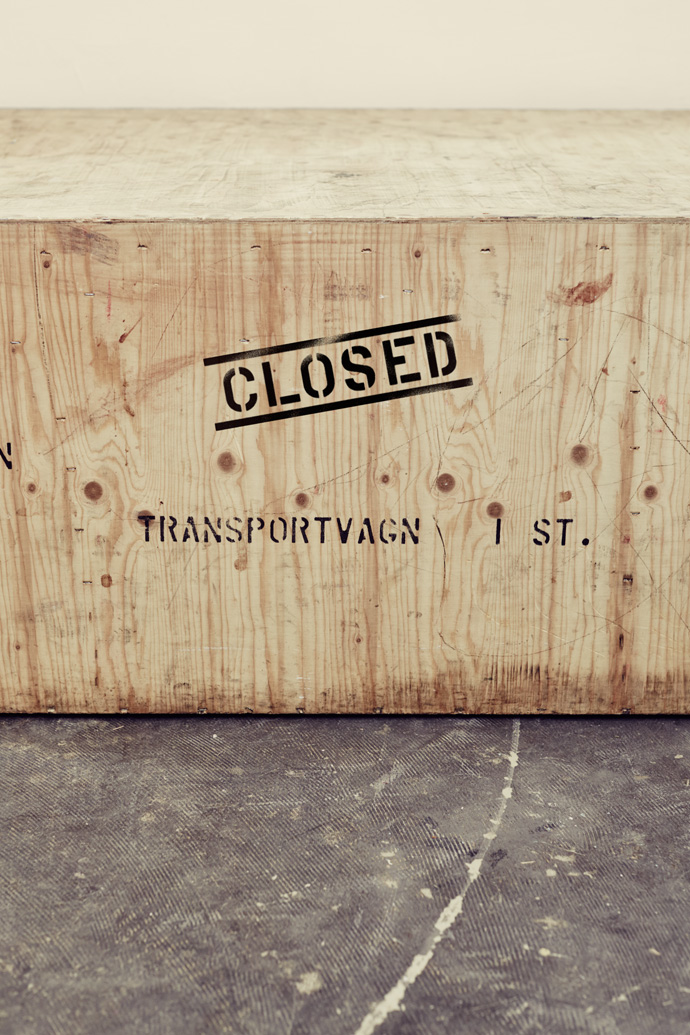
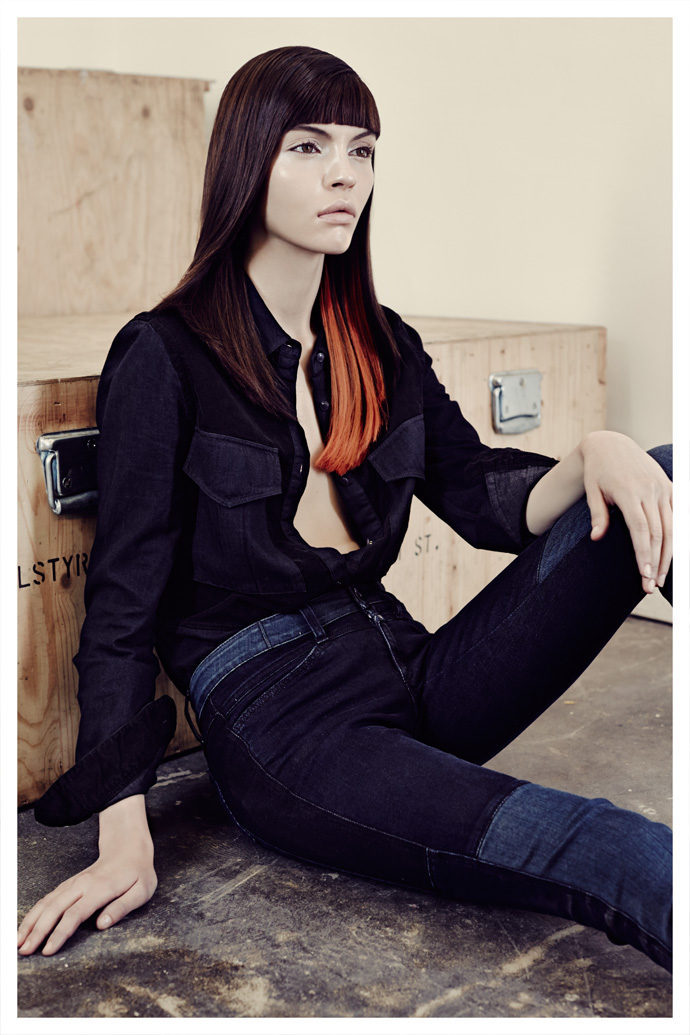
Shirt and Jeans FW 13/14 Kostas Murkudis for Closed. Photography by René Habermacher
RH: You’re working for quite some time in fashion now. When you started, fashion was something different: in the 90’s, fashion still had a socio-cultural context, was a compass and expressive part of movements. Today it’s different, its not really that a social movement expresses anything through dressing codes.
KM: That’s true and has obviously social, socio-political, and sociological causes. There is very little happening that could tempt for re-orientation. I do really hope that finally something will be happening. Or has it started already? When you look what is going on in Brasil, or Turkey, in countries where I would not have expected that this kind of movement would be surfacing.
The situations in Greece, Portugal or Spain, France and possibly soon England, don’t look so great either, but something is happening and I am hoping very much that this will spread across cultures and regions, and maybe create the necessity to develop new codes. Obviously they have to develop themselves, we as designers can’t help it.
RH: For quite a while fashion hasn’t had a cultural value of progress, it has become more a simple “garment industry.”
KM: That’s right. Fashion is not allowed to be like this anymore. It’s the very capitalist approach to define success only through growth, to which the big houses are forced to: generating work, circulate money, this and that – it’s not about content at all. In fact it is even arbitrary who designs. It is the brand with its margin that is in focus.
If that’s what’s thriving in society, fashion can only be its image.On the other hand, design has become another aspect – let’s take an example like the iPod, or the iPhone and what has been generated here: a simplicity, practicability and a beauty of objects that have not been produced like this in a while.
It’s not about developing funky variants and decorations, but to work continuously on refinement and improvement with every generation, which I believe impacts our everyday culture. Even kids are not seduced to just buy something new because there are some new crazy buttons added. And you don’t have the desire to buy a jeans with 25 embroideries and absurd stitchings on the butt that are completely pointless. This pointlessness, this battle of material is not working anymore.
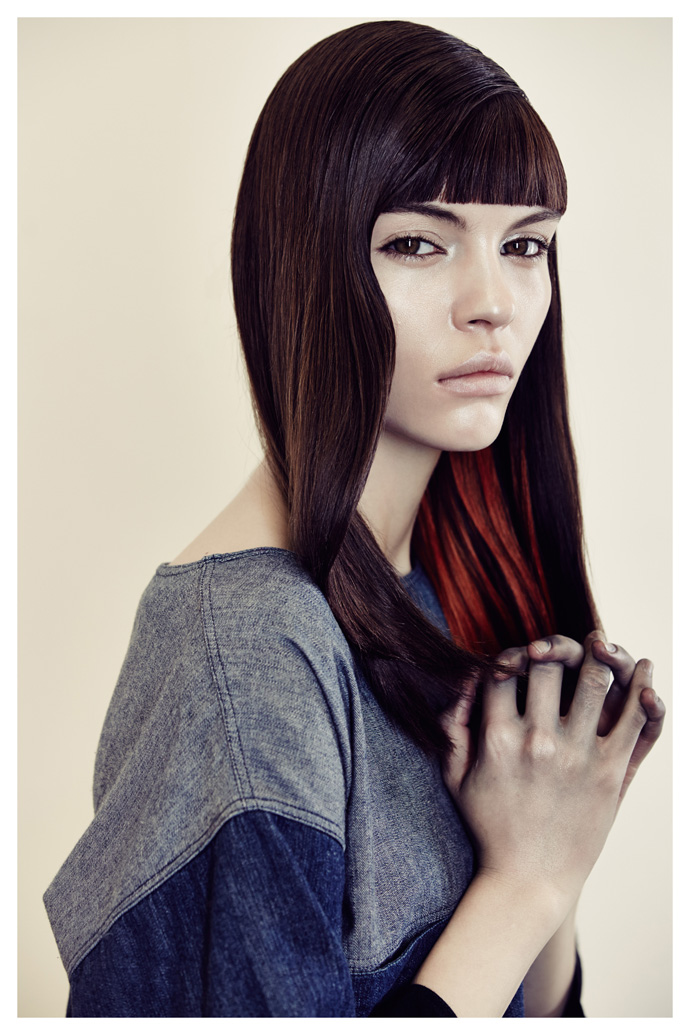
Jeans dress FW 13/14 Kostas Murkudis for Closed. Photography by René Habermacher „First there is nothing, then a deep void and finally a blue depth.“
Yves Klein.(Leitmotif for the colour codes to the SKYWALK CAPSULE COLLECTION No.1)
For example my brother Andreas, who owns a concept store in Berlin, he affords himself the luxury to buy only what he thinks is really good, regardless of the label. He buys what is up-to-date in his eyes. He was totally shocked about the pricing for which it’s possible to get good design that is on top politically correct produced in Italy: good quality fondly fabricated from great fabric. Not that this is world changing…
RH: But democratic?
KM: Democratic in a positive way. I didn’t really want to use that word. When my brother saw the Skywalk Capsule Collection in Berlin, he went to order straight away several looks from the FW collection, saying: “wow, this is really cheap- and so cool, but really cheap”.
Of course we have the same approach, maybe also because we grew up in the DDR: for us longevity or functionality and beauty don’t have to cancel each other out.RH: What is your relationship to glamour?
KM: I try to stay remote, but sometimes have to make compromises. My relationship is rather an aversion. I come from a very simple background and it really does not touch me to hear “who was where with who wearing what”, that doesn’t interest me.
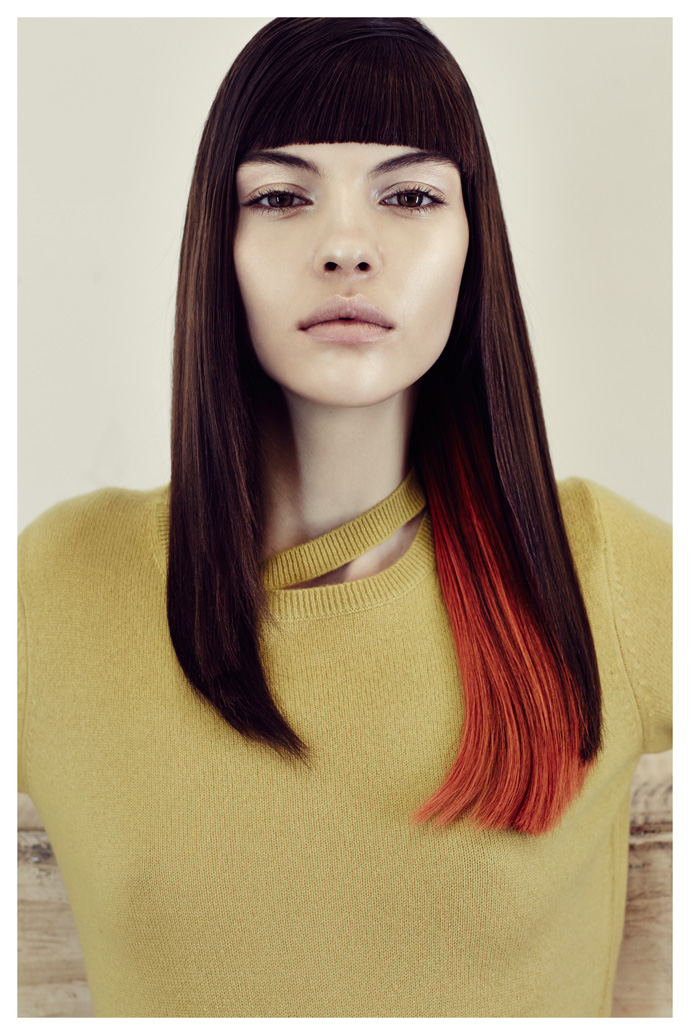
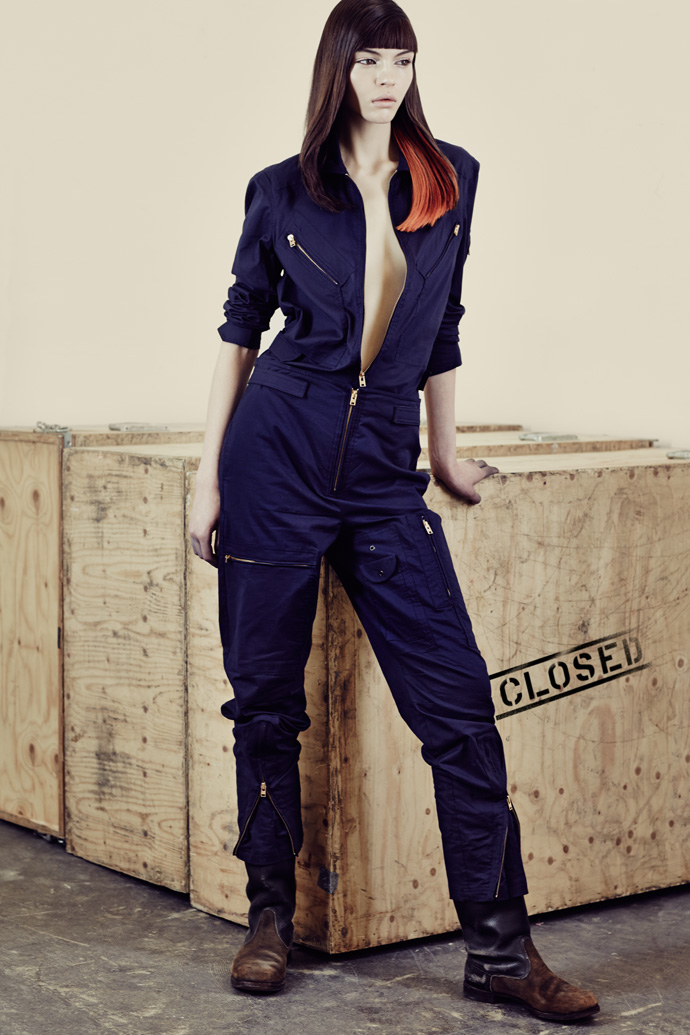
Right Side two pieces from the SKYWALK CAPSULE COLLECTION: Murkudis took inspiration from a vintage aviator suit, using the cuts and details to create a minimal wardrobe: a shirt, a blouson and pants for men and women. Boots: vintage DDR army. Photography by René Habermacher
„Earth is a delicate shade of blue“
Yuri Gagarin (Leitmotif for the colour codes to the SKYWALK CAPSULE COLLECTION No.1)
RH: Tell me a little more about the Skywalk Capsule Collection…
KM: The idea was based on the desire to bring the brand back to an international level, and the one of the brands defining aspects: the idea of unisex, that I thought very interesting and gave me also the possibility to explore menswear more, find a different angle and define their image more sharply.
Because the project was a very small range, I had to stay quite precise as well in material as colour and design, but it was the first time that I had the chance to show pieces that one actually can afford. If you look at the product, it appears at first sight quite minimal, even though its technology is actually very complex, which is something I wanted to put forward as well.
But because of all this, it was quite obvious to me to give the collection somewhat of a poetic moment.
RH: Yet here is also a practical thought behind it?
KM: Of course. It was to show the brand’s core, and a product that should function in the everyday life over long time.
Apart from that, the beauty of a product becomes apparent in its use, becomes part of our lives and our bodies. That’s what makes a jeans. It only becomes your jeans, and a great one, when it deforms on your own body, through use, through touch, through creases, through whatever. It becomes part of your being. That makes it truly beautiful when it is beautiful.
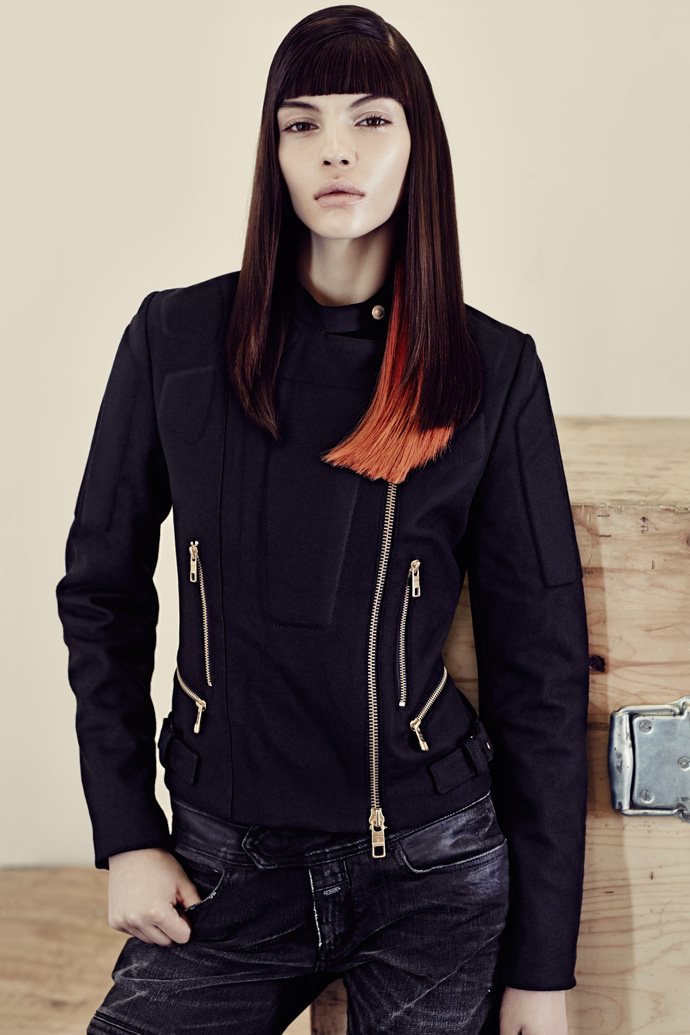
Felt Perfecto Jacket and Jeans, both FW 13/14 Costas Murkudis for Closed. Photography by René Habermacher
RH: With a clientele living in the most various meteorological conditions, does it really make sense today to produce season-oriented collections?
KM: This is a totally legitimate question. Also as we know that the big producers often deliver new products up to twelve times a year.
So for smaller brands it is indeed worth considering to orient themselves differently because they have no chance to stand up against this moloch of an industry.In a way we are overtaking ourselves with everything: when the sales start the season hasn’t even really begun, there is a resort collection, a pre-collection and a in-between collection- that is all a bit absurd. I see that with my brother, who says “I don’t need a pre-collection that is delivered in November when its perhaps snowing here and -30 celsius”. That makes no sense.
On the other side I am bound to the cycles of the classic way of producing 4 collections a year.
I think the problematics are there for everyone, but no one has yet found an ultimate solution, or takes the risk to say ‘I am going to position myself entirely new in this context.’RH: In your case do you do a presentation, or are you considering eventually a show?
KM: Right now this is not a real topic for us. Maybe next year or after that, it really depends on how we develop and what our expansion will bring.
RH: The one thing I find puzzling is with all the coverage on the shows, once the products are in the shops, you are already bored of them.
KM: I totally agree with you that three weeks after the shows you vaguely remember and when the products are delivered to the shops you practically forgot about it all. This wish and desire to own the pieces immediately is fading in that period.
But that’s what you have Zara for: they deliver within three weeks after the show a dampened version for those who can’t wait at all and never really got it anyway: those will buy the cheap copy (laughs).
By then the others just saw the newest collections and are wondering that they have ever liked the current one…. I look at this smiling.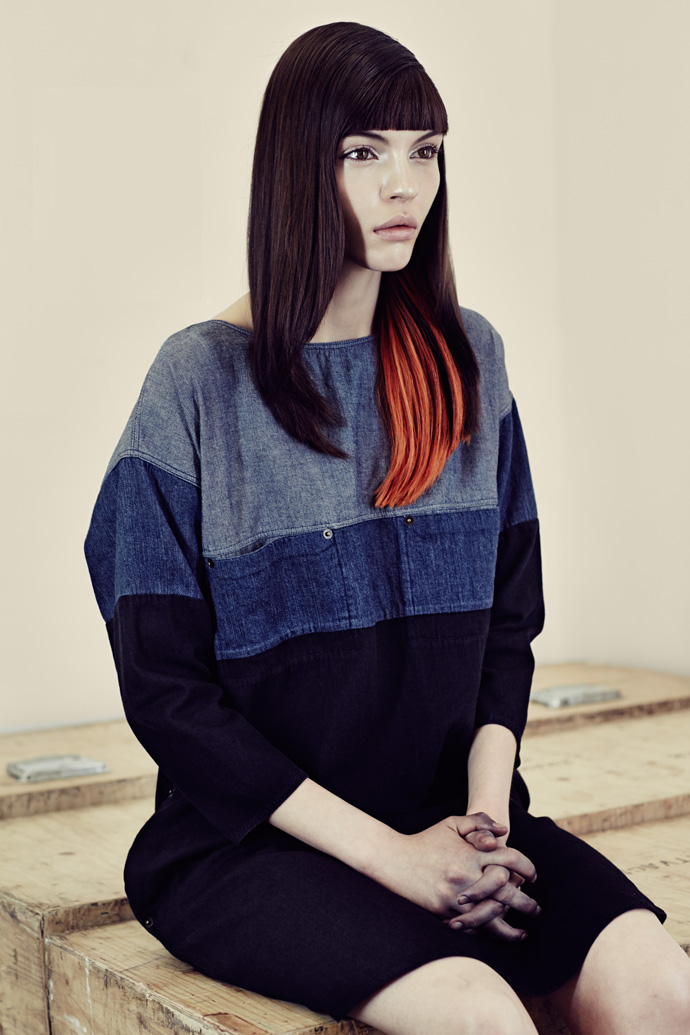
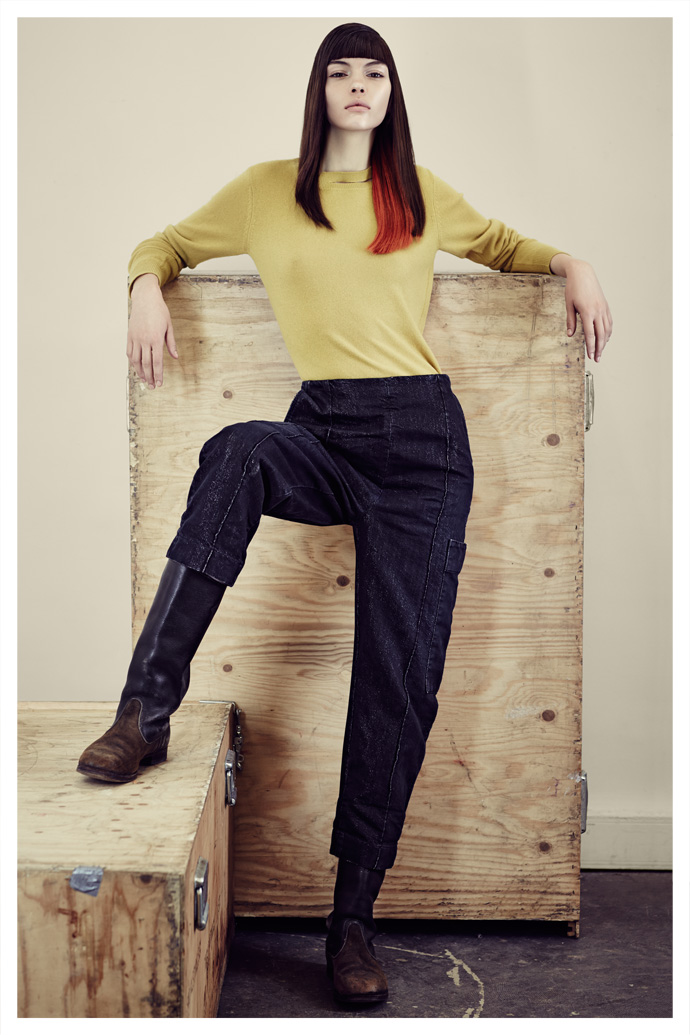
Left: Jeans dress, Right: Split neck pullover and Jeans, all FW 13/14 Kostas Murkudis for Closed. Boots: vintage DDR army. Photography by René Habermacher
RH: You do have a special relationship with Japan, is that right?
KM: Yes, when I was a small kid, I started to do judo. I had a fantastic teacher that I absolutely worshipped as a living hero.
I was excited to wear these suits, the belts. The scent of the mats, the bows, this outlandish language had fascinated me. To me it was of course an escape from my Greek moulded DDR prosaicness and the pressure to perform. I did virtually absorb all these words, ceremonies and preserve within for years.When I started to be interested in the arts I read a biography of Yves Klein, and realised he was a judo master like me, and eventually lived in Japan. I think his work was to some degree influenced by Japanese moments, in their simplicity and splendidness. This has really accompanied me ever since. The Bauhaus would have been unthinkable without the Japanese influence. In many aspects this influence has developed with me, the desire towards the exotic but as well the austere, the sophistication and the celebrated. The handling of colours, surface but also the poetic moments and the spiritual aspects behind.
I celebrated plenty successes in Japan and grew with these, so I owe a lot to the Japanese. We found each other. I was always fascinated and excited about it, to the point that Gordon, one of the owners of Closed, and I started to take Japanese lessons.
This hunger is not satisfied yet- and will always find itself in my work again.
RH: What is the last thing that stimulated you?
KM: I was very inspired by the exhibition of Martin Kippenberger: the incredible freedom of a man in dealing with the most different tools. I have great respect for his state of mind that moved me to tears of joy. I haven’t laughed that much for a while. All my senses had been spurred through this.
This interview and photographs are a Stimuleye exclusive
interview and photography RENÉ HABERMACHER
fashion editor SUZANNE VON AICHINGER
hair JONATHAN GEIMON @ AIRPORT AGENCY using Bumble and Bumble
make up MIN KIM @ AIRPORT AGENCY
model KATE B @ NEXT MODELS
thank you VERSAE VANNI @ NEXT PARIS
and LIBRAIRIE Ofr PARIS for your support00